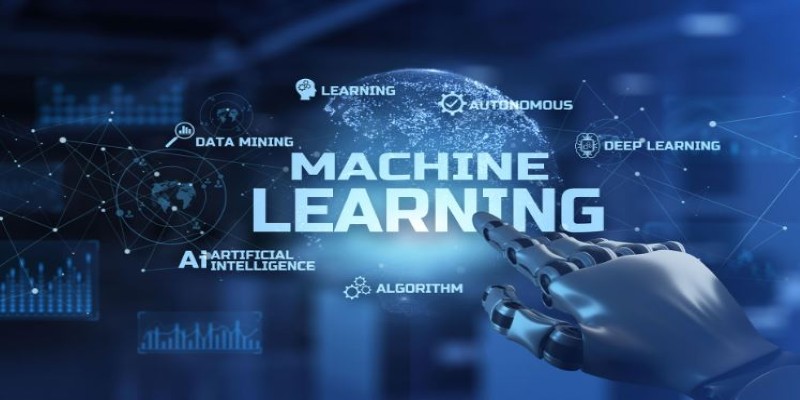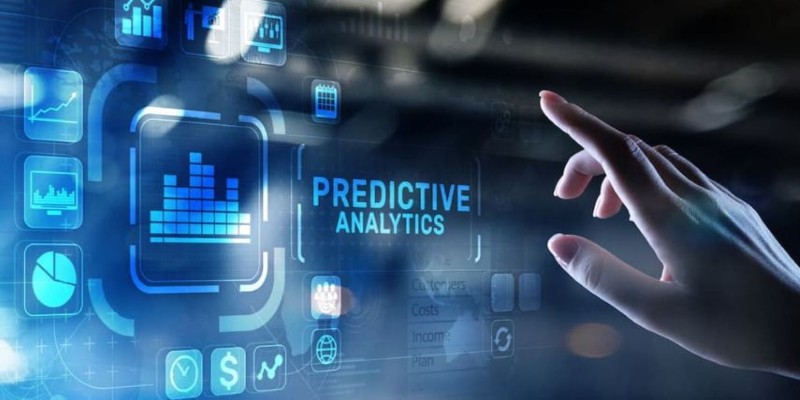The advent of artificial intelligence has introduced numerous buzzwords into our daily lives. Of these, "predictive analytics" and "machine learning" tend to be confused with each other. Both involve data, patterns, and predictions, but they are not synonymous. The distinction between them is in their intent, approach, and degree of automation. Predictive analytics relies on past data to predict outcomes based on predefined models. In contrast, machine learning takes it a step ahead by enabling systems to learn patterns and adapt without explicit programming.
Businesses, data scientists, and AI lovers must understand these distinctions. Although both methods improve decision-making, they have diverse uses. Let us dissect them simply and clearly.
Understanding Predictive Analytics
Predictive analytics utilizes past data to predict future results. Based on statistics and data analysis, it uses structured models to detect trends and make data-driven predictions. Companies often utilize this method to predict sales patterns, evaluate financial risks, and determine customer activity. The method takes a scientific approach: compiling past data, examining patterns, and using statistical methods to make likely outcomes estimates.
A distinguishing feature of predictive analytics is its use of pre-specified models. The analysts employ predetermined formulas to work with data, so the system does not "learn" or change its parameters beyond those it was initially programmed with. A retail business might apply predictive analytics to predict the top products next season by the end of the season based on what was sold before. The model performs statistical computation to make projections but does not change, with human intervention necessary if circumstances change.
Industries that rely on structured forecasting find predictive analytics particularly useful. Insurance companies assess policy risks using past claim data, banks determine creditworthiness based on historical financial records, and healthcare providers predict disease outbreaks by analyzing epidemiological patterns. While this approach provides valuable insights, its inability to adapt autonomously makes it less flexible compared to machine learning. In environments where data patterns shift rapidly, more advanced AI-driven solutions may be necessary for improved accuracy and adaptability.
What Machine Learning Brings to the Table?
Machine learning expands on predictive analytics by adding adaptability and self-improvement. Instead of relying solely on predefined models, machine learning algorithms analyze large datasets, recognize patterns, and enhance their accuracy over time. This capability allows them to refine predictions without requiring explicit programming for every new scenario.

One of machine learning’s greatest strengths is its ability to evolve. Predictive analytics relies on fixed models that require manual adjustments when data patterns change. In contrast, machine learning continuously learns from new information, automatically updating itself. For example, in fraud detection, a machine learning system refines its understanding with every new fraudulent transaction, improving its ability to detect anomalies without human intervention.
Machine learning is a foundational technology in artificial intelligence, driving innovations in recommendation engines, speech recognition, and autonomous systems. Streaming services analyze user preferences to suggest content and virtual assistants interpret spoken commands—all powered by machine learning. Unlike predictive analytics, which follows static models, machine learning thrives on dynamic updates, making it ideal for industries where data is constantly shifting.
With its ability to recognize patterns and adapt without predefined rules, machine learning is revolutionizing various sectors. From healthcare diagnostics to financial forecasting, its capacity to improve over time makes it a valuable tool for organizations seeking data-driven precision and automation.
Comparing Predictive Analytics and Machine Learning
Understanding the key differences between predictive analytics and machine learning is essential for making informed decisions in data science and AI applications.
Different Approaches to Data-Driven Decision-Making
Both predictive analytics and machine learning focus on extracting insights from data, but they approach it in distinct ways. Predictive analytics relies on structured models that use historical data to generate forecasts. Machine learning, however, takes a more dynamic approach by recognizing patterns in data and improving its performance over time without direct human intervention.
Adaptability: Fixed Models vs. Continuous Learning
One major difference between these two approaches is adaptability. Predictive analytics applies predefined statistical models, making it reliable for structured forecasting but limited in flexibility. If data patterns shift significantly, human analysts must adjust the model manually to maintain accuracy. Machine learning, on the other hand, continuously learns from new data, automatically refining its predictions without requiring constant human oversight. This adaptability makes machine learning more effective in environments where data is constantly changing.
Automation and Scalability

Another key distinction is the level of automation. Predictive analytics relies heavily on human expertise to develop and fine-tune models. In contrast, machine learning automates much of the analytical process, enabling systems to generate insights with minimal human intervention. This automation allows machine learning to scale more efficiently, particularly in industries that process large volumes of data, such as finance, healthcare, and e-commerce.
Challenges and Limitations
Despite its advantages, machine learning comes with its own set of challenges. It requires massive datasets, significant computing power, and continuous monitoring to ensure its accuracy. Additionally, machine learning models can be complex and difficult to interpret, making it harder for businesses to understand how decisions are made. Predictive analytics, while more rigid, remains a preferred choice in industries that require transparency and structured forecasting, such as finance and insurance.
Conclusion
Predictive analytics and machine learning both convert data into actionable insights but differ in methodology and flexibility. Predictive analytics uses historical data and predefined models to generate forecasts, making it ideal for structured decision-making. In contrast, machine learning continuously adapts by recognizing patterns and refining predictions without human input. While predictive analytics excels in stable environments, machine learning thrives in dynamic settings where data constantly evolves. The choice between the two depends on the need for structured forecasting or adaptive learning. By integrating both, businesses can enhance efficiency, make smarter decisions, and maintain a competitive edge in an increasingly data-driven landscape.
